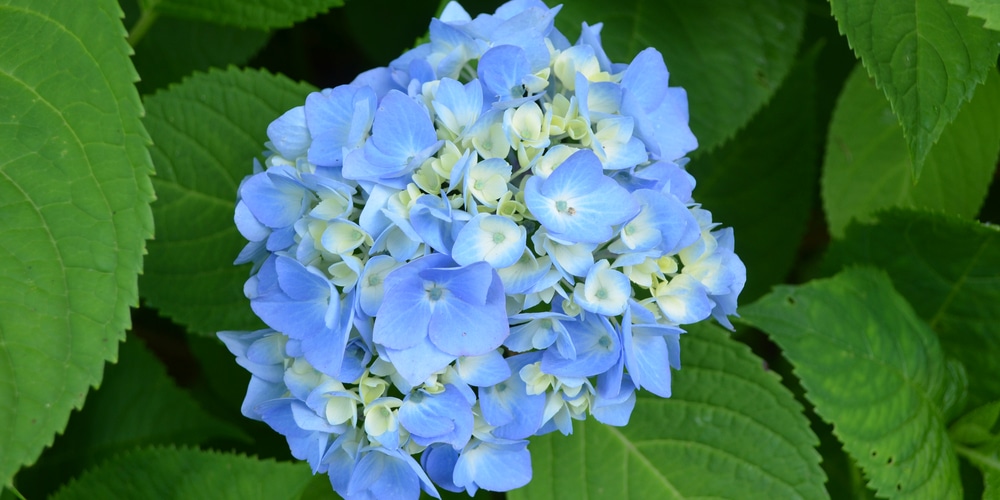Hydrangea leaves turning black is usually a symptom of a bigger problem in the plant. In this article, we’ll address some of the most common culprits for darkening hydrangeas leaves.
Fungal Diseases in Hydrangeas

Fungal diseases frequently cause leaves to turn black. Some start as spots on the shrub, while others create a fungal fuzz that covers the plant’s leaves. Problems like these usually occur in the late summer or fall when the weather becomes wetter. One way to stop fungus before it starts is to avoid wetting leaves while watering your hydrangea.
Some common fungal diseases include:
- Anthracnose: Spots present on leaves and petals forming dark brown blemishes around an inch in diameter.
- Botrytis Blight: Dark round spots form on leaves, and fuzzy gray fungus forms on the flower.
- Cercospera Leaf Spot: Characterized by dark spots on leaves that are darker on the outsider. This fungus spreads from the bottom to the top of the plant.
- Powdery Mildew: White residue appears on the leaves resulting in stunted leaves.
Proper ventilation prevents fungal disease, so consider carefully where you place a hydrangea. The airflow keeps leaves dry and healthy, and well-draining soil does the same for roots. Soggy plants become perfect breeding grounds for fungus.
If an already established plant shows signs of fungal disease, there’s not much you can do to fix the issue immediately. Fungicides only prevent these problems from occurring and will not cure your plant. Treat plants in early spring when new leaves emerge disease-free. Since fungus survives on infected leaves, it is also essential to remove and dispose of old leaves on the plant.
A hydrangea infected by a fungal disease can usually survive. It just will look less attractive.
Four-lined Plant Bug
If you’ve noticed yellow bugs crawling on your plant in addition to leaf discoloration, four-lined plant bugs may be the cause. These bugs and their young feed on the leaves of plants, and severe feeding can result in brown or black leaves. Usually, though, you’ll just notice brown and black spots on the hydrangea.
Most of these infestations will only injure your plant, not kill it, and minor infestations can usually be left untreated. Discourage the return of the bugs by removing damaged plant material in the fall. Four-lined plant bugs lay eggs on these, and removing them prevents re-infestation.
Pesticides can also be used against younger bugs, but they won’t be necessary in most cases.
Environment Problems
If you’ve recently planted your hydrangea and it’s experiencing problems, the cause may be placement. These are some of the environmental issues that may be the cause of hydrangea leaves turning black.
Leaf Scorch
If leaves on your plants look yellow and dry in addition to showing brown or black splotches, leaf scorch might be the source of the problem. This condition causes leaves to lose water faster than the roots can replace it.
Several different factors, including underwatering, can cause leaf scorch. Too much sun, high temperatures, and dry or windy conditions contribute to leaf scorch. Follow proper watering practices and fertilize roots to prevent damage.
Summer pruning lessens the effect of leaf scorch, but the best way to avoid the condition is to pick a well-shaded place for your hydrangea.
Phosphorus Deficiency
Soil conditions can also turn green leaves dark when it lacks the proper nutrients. Look for this on the oldest leaves, where phosphorus deficiency will be most apparent. Adjust the phosphorus levels by adding fertilizers to your hydrangea.
Final Thoughts
Many garden problems can result with hydrangea leaves turning black and in the worst cases the plants may die. Choosing the best place for your hydrangea helps prevent these problems. Some can be treated, but picking a slightly shady, well-draining spot may stop any issues before they start.
